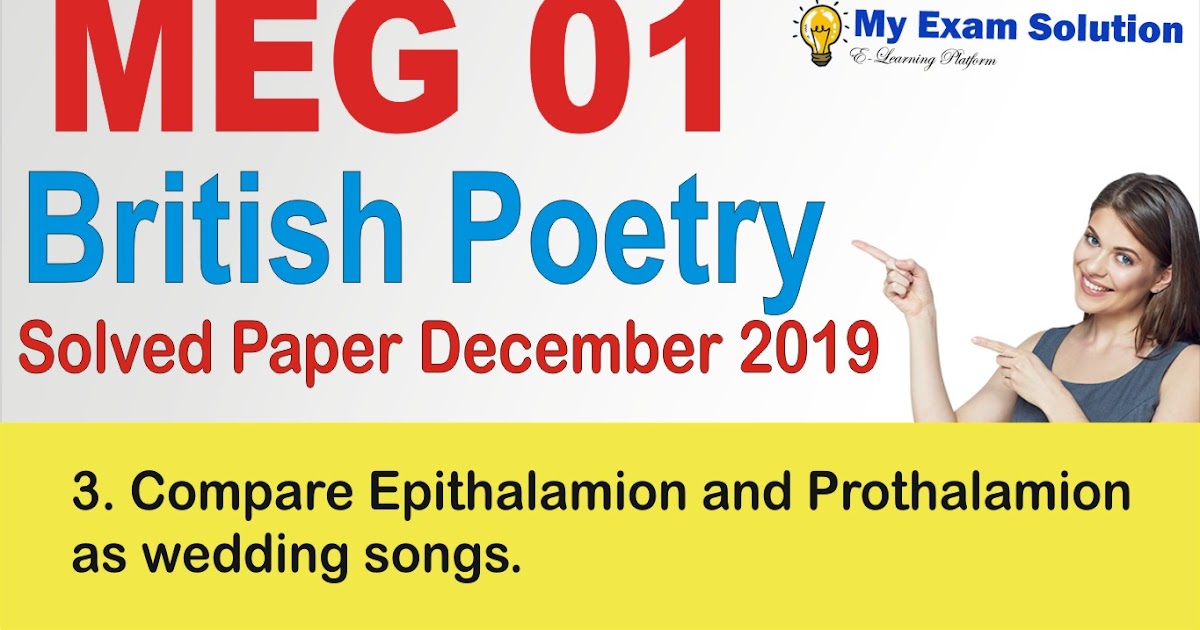Prothalamion Poem Line By Line Explanation
PROTHALAMION: Prothalamion, the commonly used name of Prothalamion; or, A Spousall Verse in Honour of the Double Marriage of Ladie Elizabeth and Ladie Katherine Somerset, is a poem by Edmund Spenser (1552–1599), one of the important poets of the Tudor Period in England. Published in 1596 (see 1596 in poetry), it is a nuptial song. 'Prothalamion' by Edmund Spenser is a long verse 'written as a wedding song for the daughters of a duke.' Rather than write with a divergence of thought, Spenser uses a continuous thought.

Charles Lamb characterises Edmund Spenser as the “poet’s poet”. Other Elizabethan writers acclaim him as the the prince of poets. This is so, because of Spenser’s coinages and unique poetic faculty that serves as an inspiration for the many poets of the future. Many later poets were inspired by and emulated his poetic conventions. An analysis of Edmund Spenser’s Prothalamion will reveal his passion for nature along with logical statements and therefore critics find his work enthralling and novel.
The Setting of Prothalamion
Edmund Spenser’s Prothalamion is set along the banks of the River Thames. He portrays Thames in all its magnificence and glory. The refrain ” Sweet Thames, Run Softly Till I End My Song” provides the apt imagery and thereby extols the beauty of the setting. There is musicality in nature as we find the setting beside the River Thames Beautifully pictured including the trees, flowers, birds and the green haired Nymphs- the mythological daughter of the river.
Classical Imagery in the poem
Spenser provides mesmerizing visual images and allusions in Prothalamion. He brings in imagery from the Greco- Roman period. The Green haired nymphs, the daughter of the Thames is the liveliest of his images. They collect flowers to adorn the bride and the groom. The swans symbolise the two brides- Elizabeth and Katherine. They are described as lovelier and fairer than the Greek Gods Zeus and Leda. At one point, the nymphs mistake them for the immortal swans who drive the chariot of Queen Venus.


Prothalamion as a Betrothal Song:
Prothalamion Poem Line By Line Explanation Pdf

The words Epithalamion and Prothalamion were coined by Spenser. While Epithalamion refers to a nuptial song, Prothalamion means an engagement song. It was written to celebrate the twin marriages of Elizabeth and Katherine Somerset, the daughters of the Earl of Worcester. The poem was published in 1596, a few months before the wedding.
The poem written in 180 lines has all the elements of a betrothal song. The prospective brides are portrayed as beautiful swans who float and wade gently through the green waters of River Thames. The nature stops by to admire the beauty of the birds. The uncertainties, longing and excitement of a bride echoes through the work. Classical allusions and imagery intensifies the melody of the poem. Critics have analysed Spenser’s poem and identified it as one of the best poems of the writer.
Prothalamion, the best spousal verses of all time, though less sensible than its sister poetry, Epithalamion; is a lyrical benchmark running softly as musical rhyme. The entire verse is a pure magic with the refrain “Sweet
Through the verse, Spenser reflects transparency and fine classical imagery. Beyond doubt, Spenser charges the atmosphere with references to two great rivers; namely
The penning of the verse essentially must have begun from the Latin poems namelyW.Vallan’s “A tale of two swanes” & Leland’s “cygment cantio” as models. However, Spenser brought in conventional imagery such as flowers, birds, rivers and woods. Two swans, represented as the daughters of

Prothalamion Poem Line By Line Explanation Examples
Dr. Johnson says that Prothalamion holds autobiographical lines of Spenser which is a conventionality. As a Renaissance poet, Spenser shouldn’t have done that and historical references do not always prove fruitful and enjoyable when it comes to poetry. Moreover, Spenser fails to bring the actual scene of marriage and instead concentrates more on the descriptive verse. Eventually, the content becomes less factual and dreamier with absence of the real brides. Contrarily, Epithalamion revolves around the lovely wedlock of Spenser himself, thus making it more realistic and appealing.
Prothalamion, an epitome of soothing musical verses and a portrayal of elegance is embroidered with bliss and purity. The artistic imagery, sweet music and lyrical power make Prothalamion an unparalleled product of non dramatic renaissance